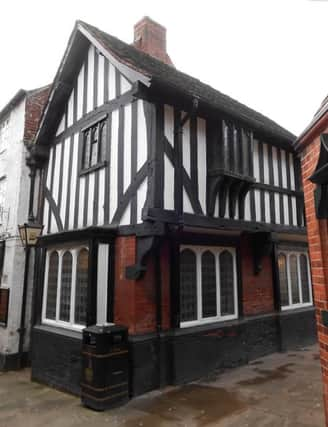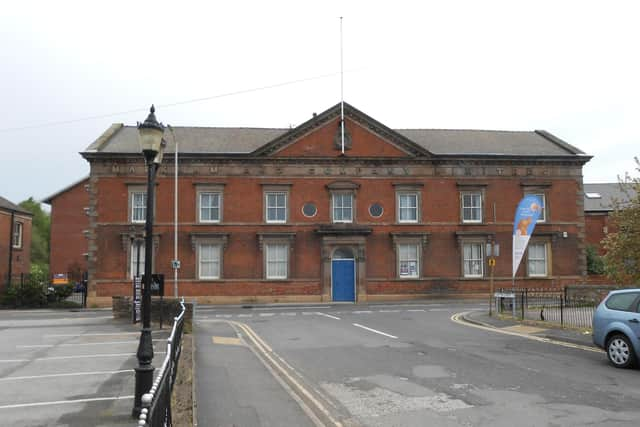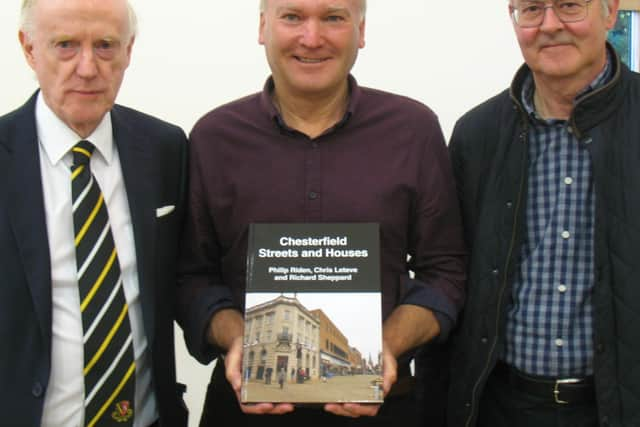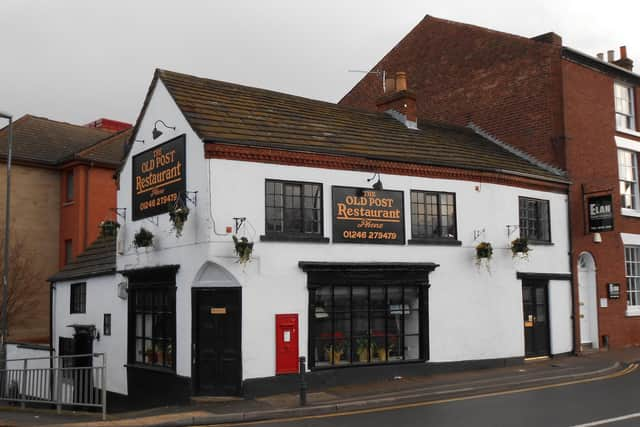Chesterfield's history and its landmark buildings revealed in new book


Sorting the fact from the fiction provided volunteers with a weighty task in the build-up to publishing their book Chesterfield Streets and Houses. They spent two years collating the data gathered from extensive research into estate records, deeds and old maps.
The book, written and edited by Philip Riden and Chris Leteve, with cartography by Richard Sheppard, debunks some mistaken ‘facts’.
Advertisement
Hide AdAdvertisement
Hide AdAmong their findings was that the so-called ‘Georgian’ terrace on Saltergate was actually built in Queen Victoria’s reign, constructed by William Rooth around 1847 to 1849.


First mentioned in 1646, Chesterfield’s bowling green is one of the oldest in the country still in use. But the often quoted date of 1294 as its origin is a complete myth, according to the book’s authors.
Chesterfield’s legendary timbered Royal Oak has only been a pub from about 1775 and has nothing to do with the Knights Templar of the 12th and 13th centuries. Probably dating from the 16th century, it was later divided into two butchers’ shops. In the 19th century the building was added to the Royal Oak public house to the south.
Allen and Orr’s timber company is probably the longest business still on its original site. Its predecessors, the Rooth family, started on the site about 1780.
Advertisement
Hide AdAdvertisement
Hide AdThe only purpose-built solicitor’s office in Chesterfield – and the oldest – is at West Bars. The office was erected in 1800 and stands on a plot acquired by Bess of Hardwick and her son William, Lord Cavendish in 1599-1601.


And North Midland House on Corporation Street was probably built 30 years after the original opening of the railway station in 1840. The house may have been built from parts of the old station.
Chesterfield Streets and Houses covers the evolution of the 12th century settlement from a village into a market town. Until the Industrial Revolution, the built-up area was confined to a compact grid of streets centred on a large market place.
Philip Riden, an honorary research fellow at the University of Nottingham, said: “This book is the culmination of many hours of work from many people and sources over a long time-span. I am confident that it sets new standards for the study of Chesterfield, its history and its buildings.”
Advertisement
Hide AdAdvertisement
Hide AdChris said: “For a number of years I've been involved with the Derbyshire Victoria County History Trust (VCH) which aims to produce histories of each parish from original documents. Chesterfield local studies library has a vast collection of these.


“A by-product of the work done by members at a weekly Chesterfield research group is that I helped to write a book on the history of ownership and development of individual plots in the town centre from the Middle Ages up to recent times. The 'lead' author Philip decided I'd done so much work on it that I should be recognised as co-author!”
Chesterfield Streets and Houses costs £20 and is available to buy at Chesterfield Museum, the Visitor Information Centre and Waterstones, as well as by mail order from the publishers via email: [email protected]